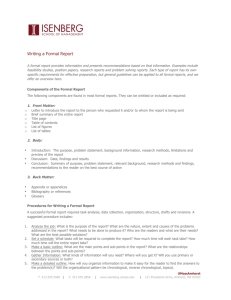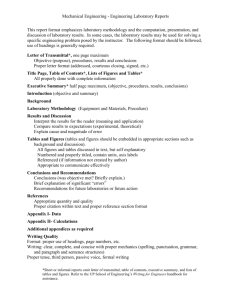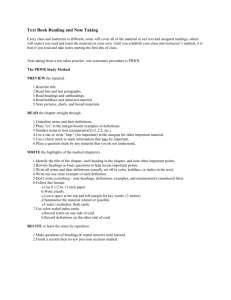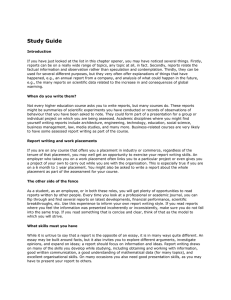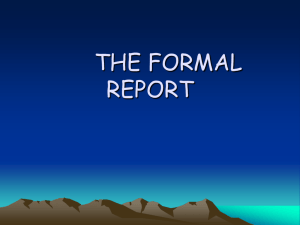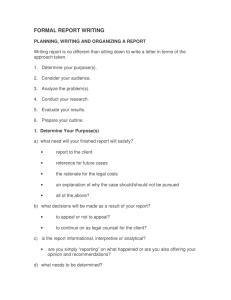THE FORMAL REPORT
advertisement
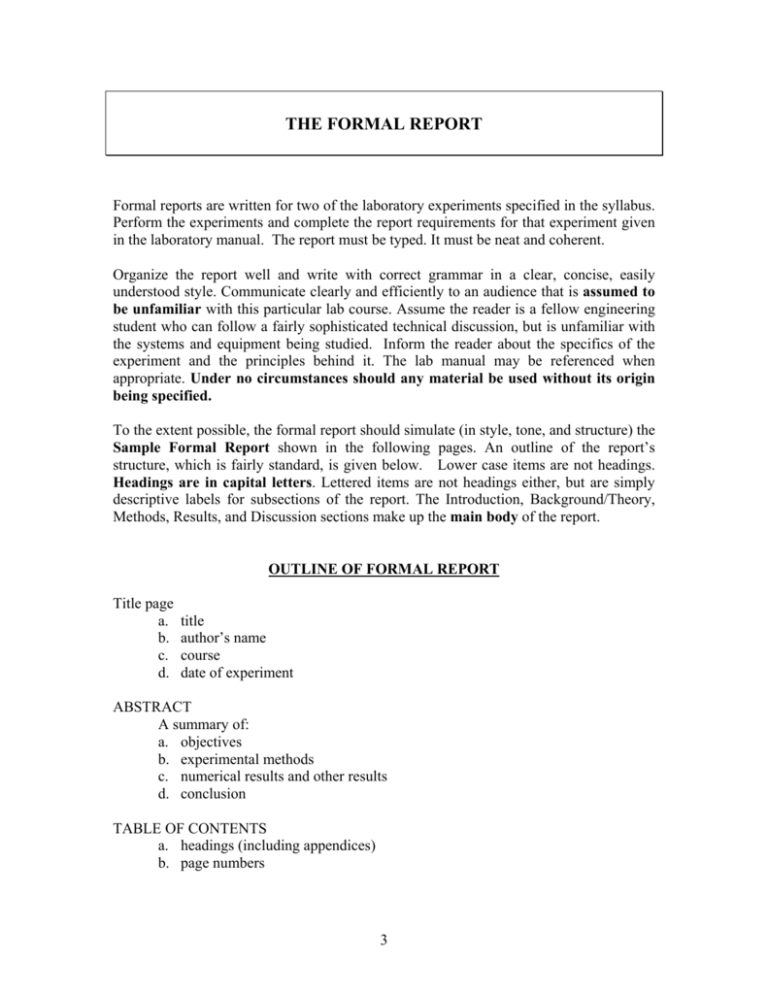
THE FORMAL REPORT Formal reports are written for two of the laboratory experiments specified in the syllabus. Perform the experiments and complete the report requirements for that experiment given in the laboratory manual. The report must be typed. It must be neat and coherent. Organize the report well and write with correct grammar in a clear, concise, easily understood style. Communicate clearly and efficiently to an audience that is assumed to be unfamiliar with this particular lab course. Assume the reader is a fellow engineering student who can follow a fairly sophisticated technical discussion, but is unfamiliar with the systems and equipment being studied. Inform the reader about the specifics of the experiment and the principles behind it. The lab manual may be referenced when appropriate. Under no circumstances should any material be used without its origin being specified. To the extent possible, the formal report should simulate (in style, tone, and structure) the Sample Formal Report shown in the following pages. An outline of the report’s structure, which is fairly standard, is given below. Lower case items are not headings. Headings are in capital letters. Lettered items are not headings either, but are simply descriptive labels for subsections of the report. The Introduction, Background/Theory, Methods, Results, and Discussion sections make up the main body of the report. OUTLINE OF FORMAL REPORT Title page a. b. c. d. title author’s name course date of experiment ABSTRACT A summary of: a. objectives b. experimental methods c. numerical results and other results d. conclusion TABLE OF CONTENTS a. headings (including appendices) b. page numbers 3 INTRODUCTION a. purpose/overview b. why important to field c. objective(s) for this particular experiment BACKGROUND/THEORY a. basic principles studied b. important governing equations c. apparatus: understanding + description d. schematic of apparatus METHODS a. procedure followed in obtaining results RESULTS a. description of results b. important governing equations c. tables and graphs presenting results d. uncertainties e. relevant comparisons with theory DISCUSSION a. brief review of results (if necessary) b. discussion (trends in results, comparison with theory, answers to discussion questions in the Report Requirements) CONCLUSION a. summary of numerical results and other results b. link with report’s objectives c. summary of discussion and conclusions APPENDICES a. references b. equipment list c. sample calculations d. uncertainty analysis e. data acquisition program with a list of channel assignments f. original data 4
